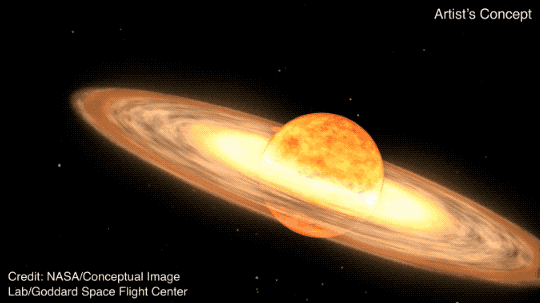Milky way
See the First Section of the Largest-Ever Cosmic Map, Revealed in Stunning Detail by the Euclid Space Telescope
The final 3D atlas of the sky will help scientists study dark matter and dark energy, which make up 96 percent of the universe but remain mysterious
How to See the Milky Way This Weekend
Late August is a great time to observe the dazzling core of our galaxy, and with the upcoming new moon, viewing conditions should be ideal—as long as you're in a very dark area
Astronomers Spot Rare, Mid-Sized Black Hole in Our Galaxy
The black hole, if confirmed, is in the star cluster Omega Centauri, about 17,700 light-years away, and it could hold lessons about how such structures are formed
A Giant Interstellar Cloud May Have Once Enveloped Earth, Potentially Causing Ice Ages
Astronomers suggest this cold, dense cloud compressed our sun's protective field between two and three million years ago, leaving the Earth exposed to cosmic material
A Rare Nova Explosion Will Soon Bring a 'New Star' to the Night Sky—How to Catch a Glimpse
In an event that occurs only once every 80 years, a distant remnant of a star will grow much brighter, briefly becoming visible to Earth
A Stellar Collision Birthed the 'Dragon's Egg' Nebula, a Puzzling Structure in the Milky Way
The colorful cloud of gas and dust has a violent origin—and this explains the unusual traits of two massive stars within it, astronomers say
Astronomers Discover a 'Sleeping Giant' Black Hole in Our Galaxy—the Second-Closest Known to Earth
Called Gaia BH3, the dormant black hole is 33 times more massive than the sun, making it the largest recorded stellar black hole in the Milky Way
Astronomers Capture Dazzling New Image of the Black Hole at the Milky Way's Center
The first image of the black hole taken in polarized light, the new view shows the supermassive structure's magnetic fields and hints that it could be hiding an enormous jet
James Webb Telescope Captures Image of Supernova That 'Absolutely Shattered' a Star
The new image gives astronomers a near-infrared look at the stellar explosion called Cassiopeia A, located around 11,000 light years away from Earth
See Ten Dazzling Space Images From the Astronomy Photographer of the Year Awards
From comets to nebulas to the Milky Way, the shots shortlisted in the annual competition capture the beauty of the cosmos from Earth
Scientists Find Ghostly Neutrino Particles From the Milky Way
It's no surprise that neutrinos come from within our galaxy, but the tiny, chargeless particles are very hard to detect
See the James Webb Telescope's Stunning New Snapshot of an Exploded Star
The supernova, known as Cassiopeia A, is located roughly 11,000 light-years from Earth and could offer insights into cosmic dust and star death
Astronomers Discover Closest Known Black Hole to Earth
Researchers believe there may be even nearer ones that have yet to be detected
See the Best View Yet of the Orion Nebula
The James Webb Space Telescope has captured young stars and vibrant gas and dust within the popular constellation
The James Webb Space Telescope Might Have Spotted the Most Distant Galaxy Ever Seen
Scientists think the light detected by the telescope is from just 300 million years after the Big Bang
Here’s What the Black Hole in the Center of the Milky Way Looks Like
A team of scientists from around the world collaborated to get a visual peek of the supermassive object
See Astonishing Milky Way Mosaic Image That Took 12 Years to Create
A Finnish astrophotographer created the 1.7 gigapixel image by stitching together photos with a total exposure time of roughly 1,250 hours
An X-Ray Hourglass Is Emerging From the Middle of the Milky Way
Astronomers spotted the two gargantuan bubbles of charged particles ballooning out from the middle of our home galaxy
Astronomers Crack the Case of the Blue Ring Nebula
The source of the dazzling display puzzled scientists for more than a decade
Meteorite Grains Are the Oldest Known Solid Material on Earth
The oldest dust sample, perhaps 7 billion years old, predates the formation of our planet and the sun
Page 1 of 2
:focal(960x549:961x550)/https://tf-cmsv2-smithsonianmag-media.s3.amazonaws.com/filer_public/f4/7b/f47b89c4-4f38-4570-bc12-e5c5ecb54455/euclid_captures_core_of_abell_3381_galaxy_cluster_pillars.jpg)
:focal(1024x688:1025x689)/https://tf-cmsv2-smithsonianmag-media.s3.amazonaws.com/filer_public/fc/48/fc48bd83-e879-4da8-95d0-3cfccd785a59/34565702861_ca071e26f5_k.jpg)
:focal(560x560:561x561)/https://tf-cmsv2-smithsonianmag-media.s3.amazonaws.com/filer_public/4d/05/4d051c14-9155-4062-8244-aa19edabf81b/hubble-omegacent-crop-stsci-01j1x1rzvdzs3hv0s5vbhc7x0r.webp)
:focal(537x445:538x446)/https://tf-cmsv2-smithsonianmag-media.s3.amazonaws.com/filer_public/e8/b6/e8b68174-1c9b-465e-8469-b66151dd09fa/heliosphere.jpg)

:focal(1094x1354:1095x1355)/https://tf-cmsv2-smithsonianmag-media.s3.amazonaws.com/filer_public/29/3e/293ecff1-66d0-4e59-b1af-4e2a5e17339b/dragon1.jpg)
:focal(580x331:581x332)/https://tf-cmsv2-smithsonianmag-media.s3.amazonaws.com/filer_public/19/32/19321ec4-4ae9-4749-ad51-7ec75adbf27a/gaia1.webp)
:focal(1000x1000:1001x1001)/https://tf-cmsv2-smithsonianmag-media.s3.amazonaws.com/filer_public/05/fd/05fd3550-7ef1-46e3-9229-188eb270a02b/sgra_polarimetric_press_image-032724-lores.jpg)
:focal(873x931:874x932)/https://tf-cmsv2-smithsonianmag-media.s3.amazonaws.com/filer_public/c2/4e/c24efef7-dc5c-45a9-9a5f-3937bfcf728b/stsci-01hggzdyh8ghhssnwzd71mf0xh.png)
:focal(2163x1751:2164x1752)/https://tf-cmsv2-smithsonianmag-media.s3.amazonaws.com/filer_public/7c/67/7c67e125-31bb-45b3-9c82-f2c9021fecc8/stars_and_nebulae_rcw_58-wolf_rayet_bubble.jpg)
:focal(500x281:501x282)/https://tf-cmsv2-smithsonianmag-media.s3.amazonaws.com/filer_public/e0/cf/e0cf229e-6691-4114-a008-ff6c9af10ed5/gal_upgrade_2019week22_icl_214074e16.jpg)
:focal(2004x2014:2005x2015)/https://tf-cmsv2-smithsonianmag-media.s3.amazonaws.com/filer_public/c0/e0/c0e0fff2-f275-414b-b919-5664669b2750/stsci-01gwqc2n0mcsm6px1z6a8fbyqm.png)
:focal(2560x1463:2561x1464)/https://tf-cmsv2-smithsonianmag-media.s3.amazonaws.com/filer_public/40/6b/406ba2df-3950-415d-8678-9d3ca96fd7e5/noirlab2227a.jpeg)
:focal(1133x1448:1134x1449)/https://tf-cmsv2-smithsonianmag-media.s3.amazonaws.com/filer_public/32/5c/325cb983-e7a8-4803-9a3c-62da610c858c/orion.png)
:focal(450x450:451x451)/https://tf-cmsv2-smithsonianmag-media.s3.amazonaws.com/filer_public/32/23/32231ab9-1bad-4453-bc3b-43edd362ac1b/nasa-glass-z13-closeup-jwst-20220722.jpg)
:focal(2038x2038:2039x2039)/https://tf-cmsv2-smithsonianmag-media.s3.amazonaws.com/filer_public/a6/50/a650ebb1-2c25-4445-9e18-6ced98f49d48/sag-event-image.jpg)
:focal(2324x420:2325x421)/https://tf-cmsv2-smithsonianmag-media.s3.amazonaws.com/filer/b5/84/b584f6fe-b49d-4639-a54e-e1748c4614bd/000-grandemosaic120degreeslongresized.jpg)
:focal(900x454:901x455)/https://tf-cmsv2-smithsonianmag-media.s3.amazonaws.com/filer/40/69/4069d192-d880-497e-ba24-884e8d6363e4/erositafinds.jpg)
/https://tf-cmsv2-smithsonianmag-media.s3.amazonaws.com/filer/e5/41/e5416059-8fae-4e81-9d2d-16344b4e5fa8/2020_nov23_blueringnebula.jpg)
/https://tf-cmsv2-smithsonianmag-media.s3.amazonaws.com/filer/12/d2/12d25d01-7f56-4ec6-8875-6097d2c1cd8f/221025.jpg)